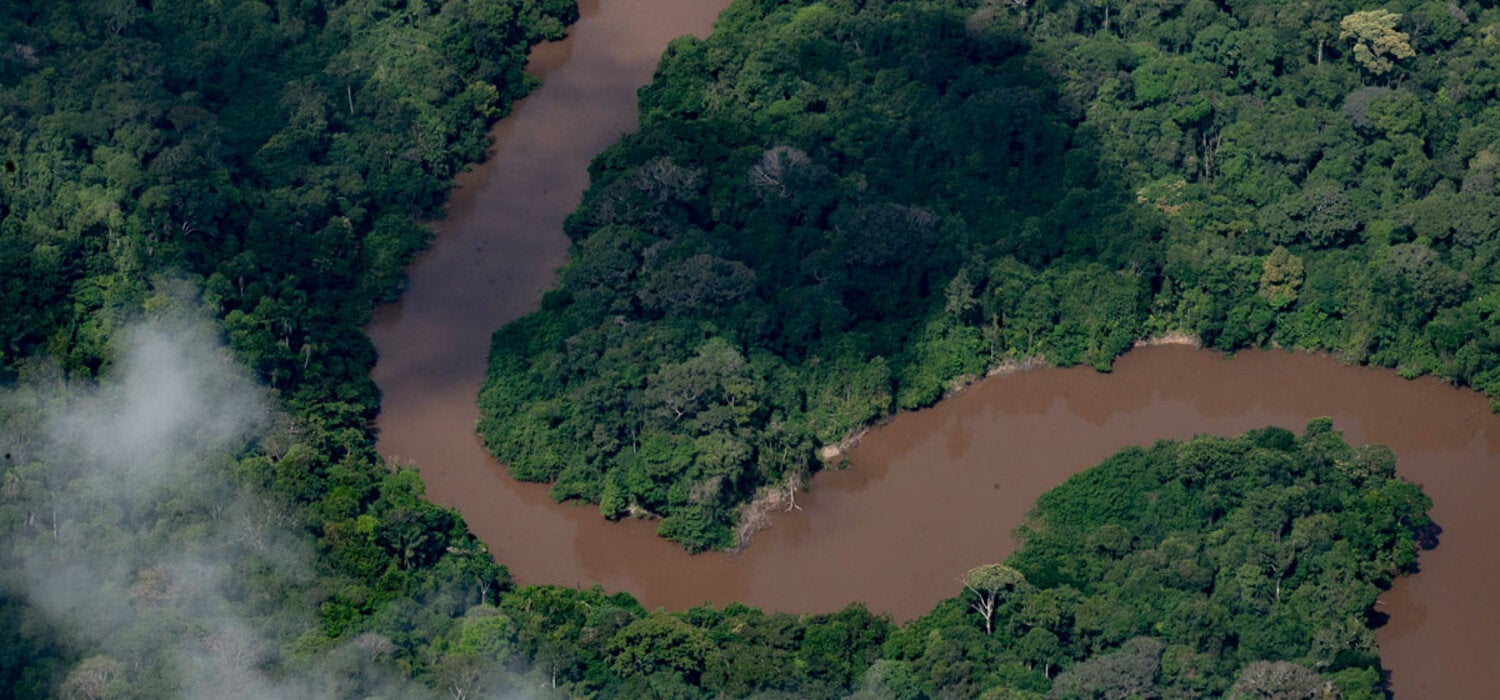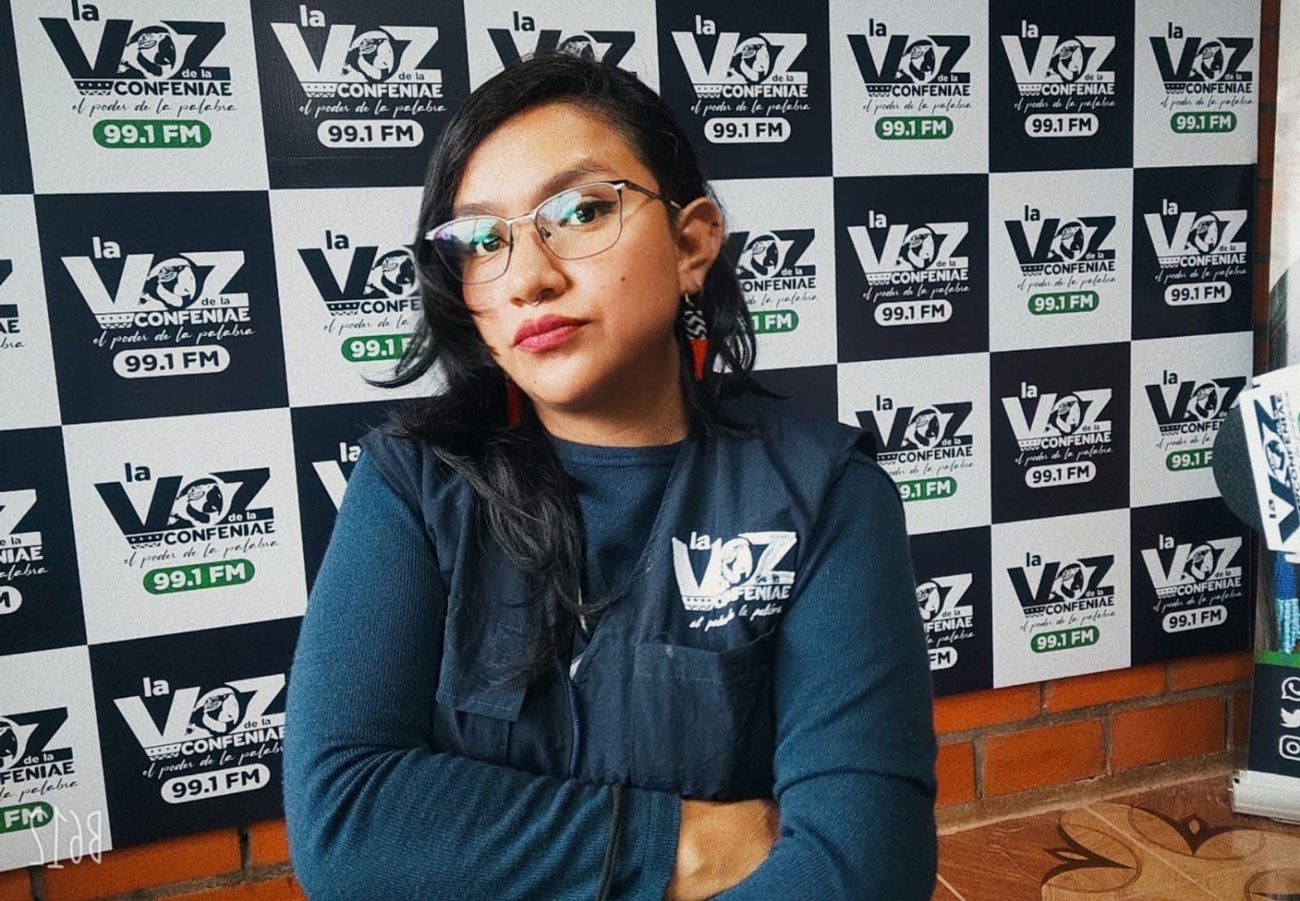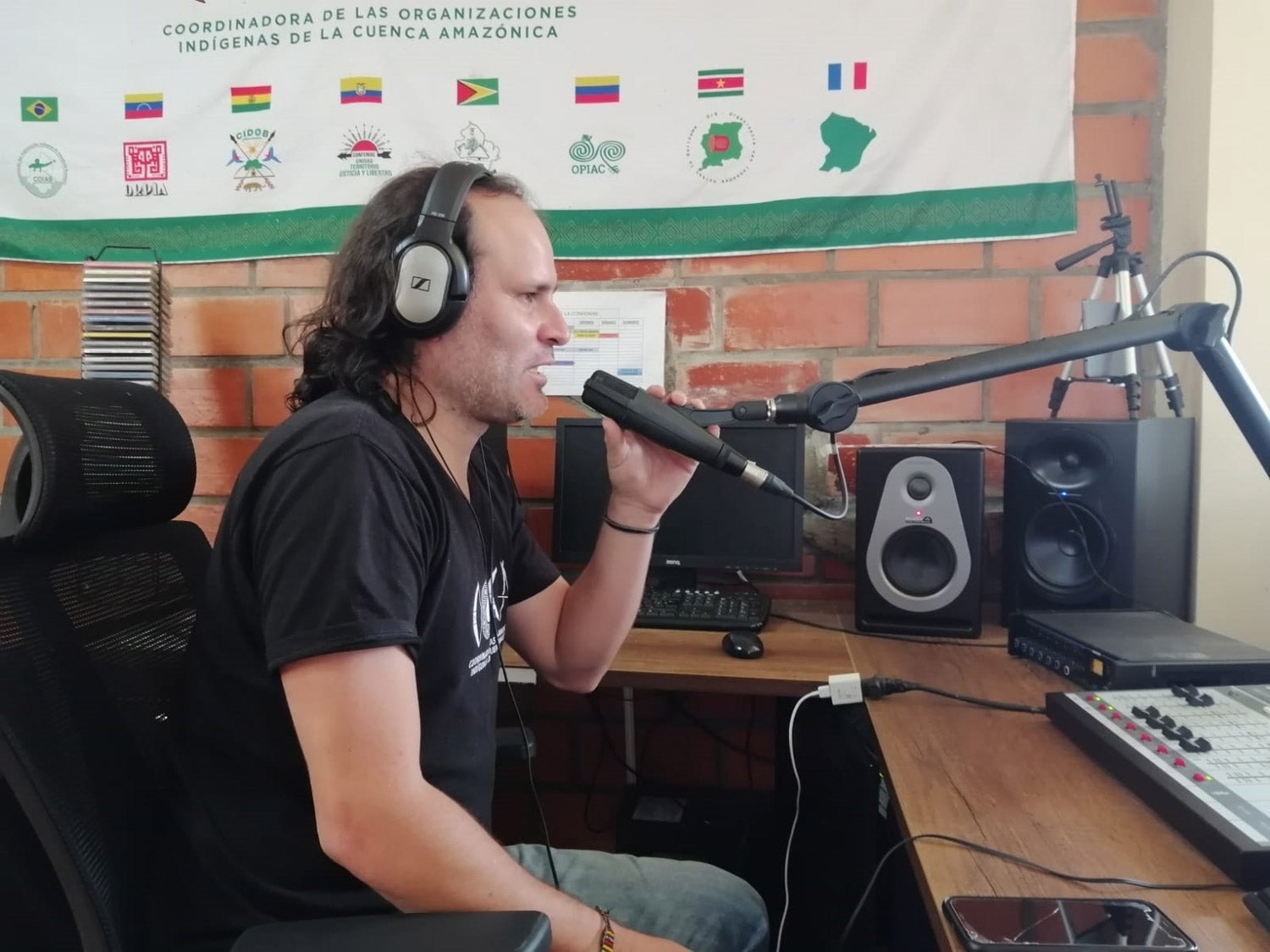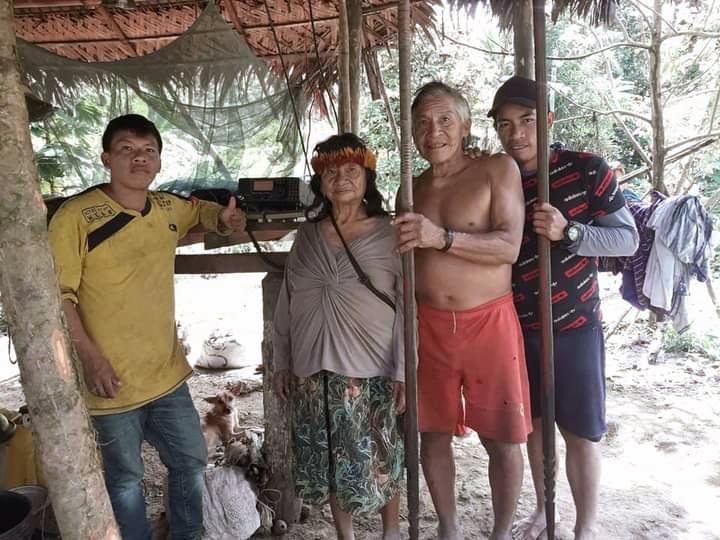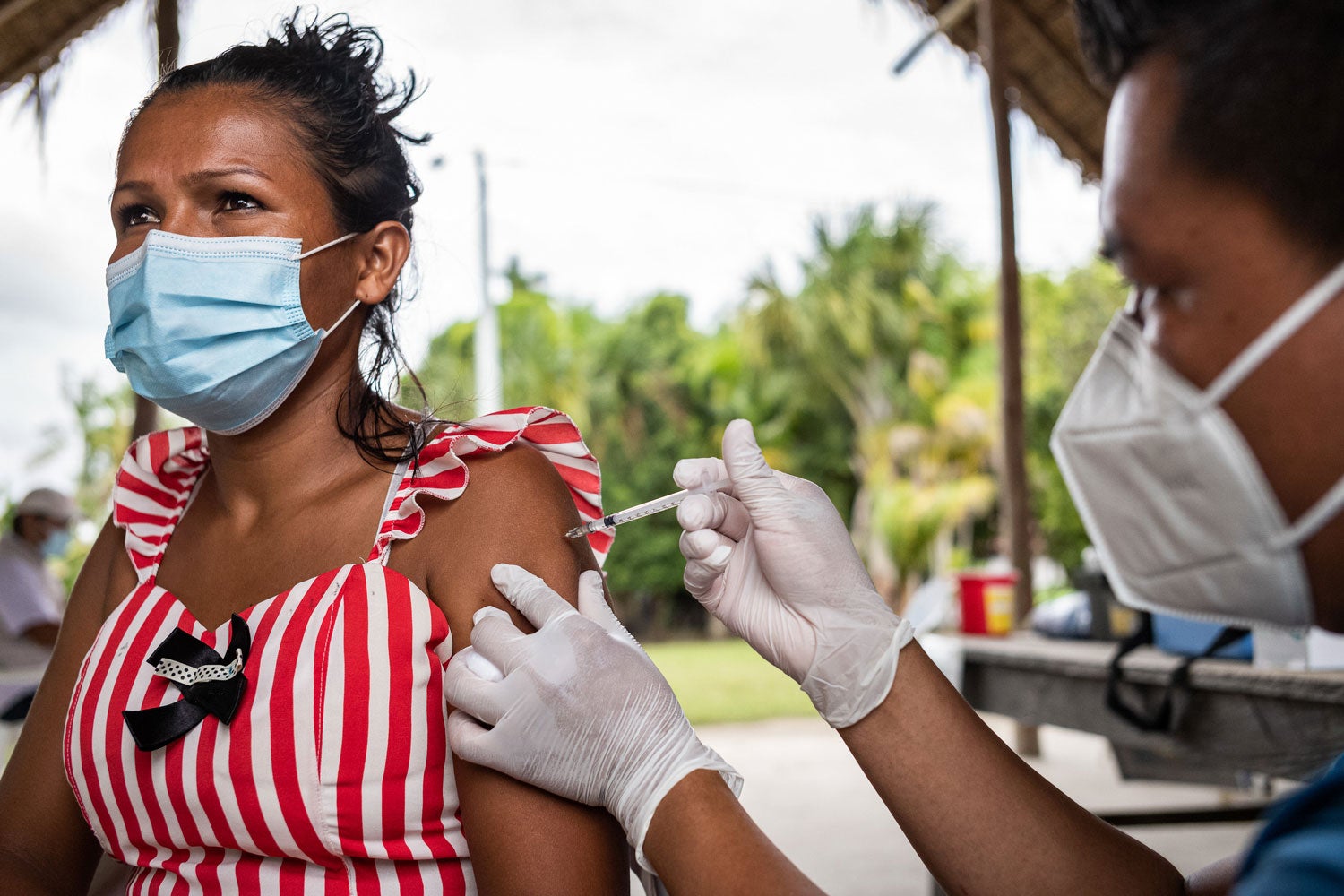27 April 2022 - Battling COVID-19 and misinformation in Ecuador’s Amazon region is all in a day’s work for Indira Vargas, a 30-year-old Kichwa woman. “Inty,” as she’s known, has been working as a volunteer at a community radio station throughout the pandemic. Her task – communicating the importance of COVID-19 vaccinations to 11 indigenous communities– spread over immense territories, some days away by boat from any health clinic.
“Having an FM frequency in our Kichwa language was really a dream come true,” says Vargas of the decades-long wait to set up a radio station that reaches hundreds of disperse communities in the Pastaza province, located in the Amazon rainforest in north-eastern Ecuador . When COVID-19 struck the area, the need to reach out to these isolated communities with accurate health information became even more pressing.
The COVID-19 death toll in Ecuador accounts for 35,000 out of a population of 17 million. The World Health Organization calculates more than 2.7 million deaths in the Americas since the pandemic began in 2020.
According to Ecuador’s Ministry of Health, more than 70 percent of Pastaza’s 80,000 inhabitants have now been vaccinated against COVID-19. Achieving this high vaccination rate was due to collaboration between health workers who travelled up and down the region administering vaccines and efforts such as this community radio station –which was supported by the Pan American Health Organization (PAHO), with funding from the COVID-19 Solidarity Response Fund– to best communicate the public health emergency response.
“La Voz de la Confeniae,” or “the Voice of the Confeniae,” an acronym for the Confederation of Indigenous Nationalities of the Ecuadorian Amazon, began broadcasting online in May 2019 and via FM radio in August 2020, at the height of the pandemic. The station’s official radio license was awarded in September 2021, but for the 40 years before winning the much-awaited tender, they paid commercial radio stations to carry their programming.
“Confronting a public health emergency like this one with infrequent communication was a major hurdle,” says Andrés Tapia, a 38-year-old biologist turned radio producer, who directs the radio station run by 11 volunteers. They rely on newsgathering from up to 25 “community communicators” who report from various remote villages.
“Another major challenge was that we had never experienced a pandemic before and so we learned and communicated about symptoms and best preventive measures as we went along,” recalls an enthusiastic Tapia from the early days of the pandemic, when he led his colleagues to produce “news you can use” on COVID-19. Their messaging was so strong that the commercial radio stations started to air their spots free of charge in both Spanish, Amazon Kichwa, Shuar and Achuar.
As effective as their broadcasting was, more was needed to keep COVID-19 from spreading, especially in more isolated and vulnerable communities who had no way of alerting each other about new COVID-19 cases. Thanks to PAHO and the financial support of the COVID-19 Solidarity Response Fund, Tapia was able to acquire 50 HM radios – short-wave devices that work as “walkie-talkies.”
Gaba Guiquita, a 33-year-old from the Waorani nation who earns a living fixing electrical equipment, received special training to install several of these radios “for isolated families who couldn’t even leave the house to buy soap or for families who had little connection to the outside world, yet had XCOVID-19 and no way of telling their neighboring community,” he explains.
This technology was a novel way of cutting outbreaks in places where health services are extremely limited and ill-prepared for emergencies – the radios have since helped with other emergencies, including felled trees and lethal snake bites.
But the challenges and successes of that early phase of the pandemic were just a warm-up to what was to come – the introduction of the COVID-19 vaccines in August 2021. Tapia and his team were suddenly faced with a tsunami of rumours, distrust and misinformation from mainstream and social media.
People didn’t want to get vaccinated, they feared they would die in two years, that women would become infertile, that the vaccines were made to kill our elders. There was so much rejection,” recalls Indira Vargas.
This is when Vargas and the rest of the radio station, in coordination with PAHO, got to work on producing radio spots focused on awareness-raising and myth-busting, with a few key messages: vaccines are safe, accepting them is not mandatory, and the decision to vaccinate is individual, not collective.
The strong rejection to the vaccine was very similar in other parts of the Amazon, where PAHO has been working on the prevention of COVID-19 using an intercultural dialogue methodology, that is, fostering awareness between traditional Amazonian medicine and Western medicine, and working closely with community leaders to enhance vaccine understanding.
Carrying out vaccination campaigns in neighbouring Colombia, where the COVID-19 death toll is at 139,000 since the start of the pandemic (out of a total population of 50 million), posed similar challenges, including travel for days by boat through dense rainforest. As in many parts of the Amazon, the indigenous communities here are particularly vulnerable to COVID-19 because of their remote locations and difficult access to healthcare.Ivy Talavera, a PAHO vaccination advisor, spent time going door to door in different communities in an effort to get more people immunized. “Often if you don’t explain to people what the benefits of vaccines are,” Talavera says, “it’s harder for them to accept. That’s why a vaccination plan must include a wider communication plan.”
To raise awareness on vaccine safety and fight disinformation, PAHO’s Country Office in Colombia implemented a community engagement strategy working with leaders from nine indigenous peoples across four provinces. After building bridges to better understand their local traditions and perspectives through workshops, the benefits of getting vaccinated were shared with the communities explained according to their local worldview and in their local languages.
“The vaccine is good for keeping us healthy, because health is what is worth the most,” said Alberto Pereira Cuello, a traditional doctor of the Paucara people of Peru who lives in Colombia, during one of the vaccination campaigns in Puerto Nariño, in the Amazonas Department.
The strategy has contributed to raising vaccination rates among Amazonian communities and is being replicated in other regions of the country.
Back in Ecuador, Tapia reflects over the harsh impact of the pandemic, particularly the loss of life. In the face of such tough times, the communities grew stronger, better organized and more connected. “COVID-19 presented us with challenge after challenge, including cultural- and communication gaps, but each challenge became an opportunity,” he concludes.
PAHO is working with health authorities, local governments and communities to improve equitable access to COVID-19 vaccines across the Americas. With funds from the Government of Canada and other key partners, PAHO is supporting projects and interventions to take vaccines to indigenous peoples, migrants, hard-to-reach communities and other populations in situations of vulnerability, while increasing the capacities of local health systems and fighting the infodemic.

